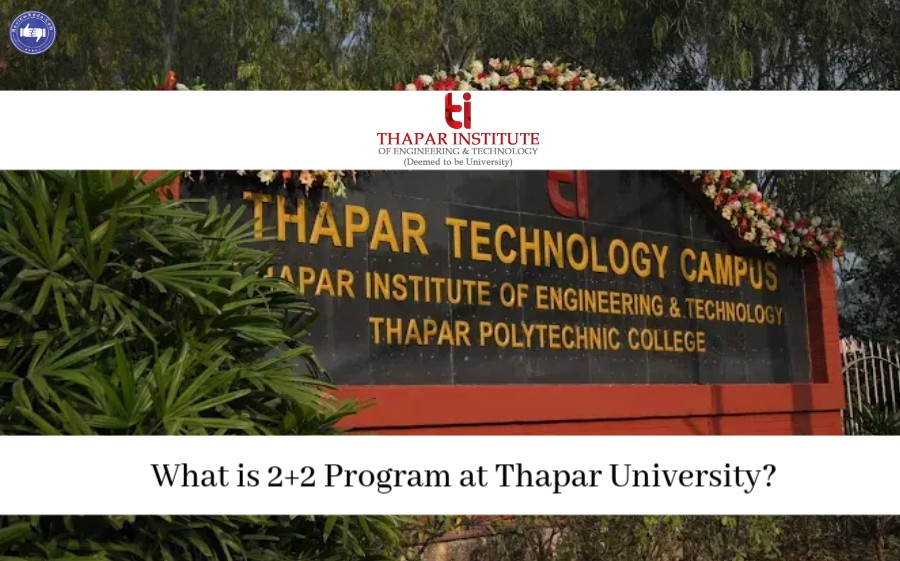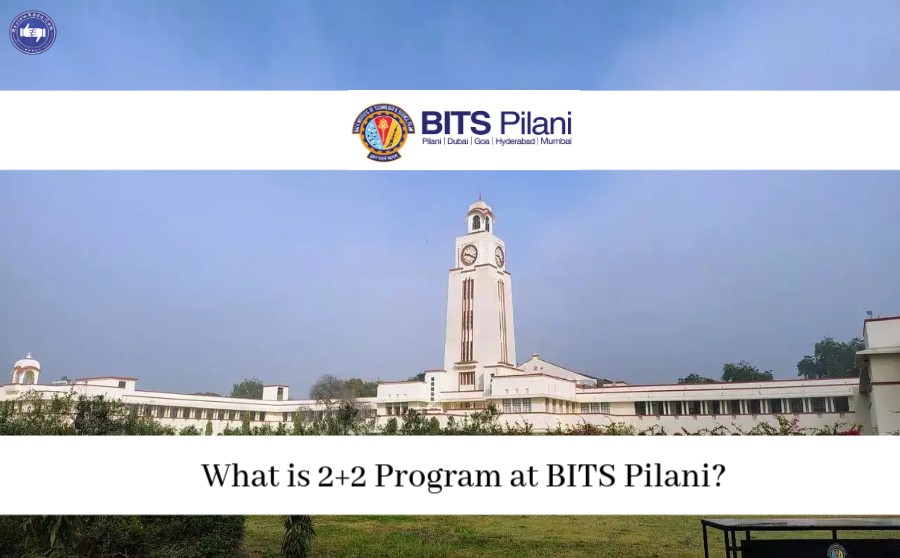IELTS vs TOEFL vs PTE vs Duolingo
Introduction
In other words, several English tests will be selected when registering for academic or work-related English skills like IELTS, Toelf, PTE, and Duolingo. And thus, each exam carries certain features, format, and acknowledgment from the international sphere. To help you determine which of these tests is sufficient for your needs, we shall compare and contrast these four types of tests in this huge article.
IELTS (International English Language Testing System)
IELTS is a well-known and recognized English test that more than 11,000 organizations accept in over 140 states. The British Council cooperatively oversees it. IDP: Several universities are involved in offering IELTS, among them IELTS Australia and Cambridge Assessment English.
Format and Scoring
IELTS has two versions: The two categories of the ITAs covered are Academic and General Training. The academic version is designed for those clients who plan to pursue an educational course in an English-speaking environment, while the General Training version is for those clients who are going to migrate to an English-speaking country or intend to undergo a professional qualification.
The examination comprises four parts: Listening and Reading, Writing and Speaking. The scoring for each band is from 1 to 9 for each section, and the overall score for band 9 is considered the highest. Therefore, the scores of the four sections are averaged to arrive at the total band score.
Advantages
-
Accepted by all universities, employers, and immigration departments of all countries of the world
- Provides both Academic and General Training options to meet various requirements.
- Provides an effective assessment of the English language competency, specifically in reading, writing, speaking, and listening.
Disadvantages
-
Comparatively pricier when compared to alternative tests.
- They are unavailable to issue the results after 13 days from the examination date.
TOEFL (Test of English as a Foreign Language)
TOEFL, one of the most famous tests that check English proficiency, is accepted in over 11,500 educational establishments in over 160 countries. Its administration is done through the Educational Testing Service (ETS).
Format and Scoring
TOEFL iBT stands for the Internet-Based Test, while TOEFL PBT stands for the Paper-Based Test. The iBT format is more popular than the PBT format; however, the PBT format is offered in areas that have no access to internet-based tests.
The TOEFL iBT comprises four parts: Now, the four skills, reading, listening, speaking, and writing, are acknowledged as essential components of a language curriculum. The scoring of each part is done from zero to thirty, meaning that the total number of points a candidate can get is from zero to one hundred and twenty. The PBT version employs a refined scoring system, and the score varies from 310 to 677.
Advantages
-
Universities, employers, and immigration authorities worldwide widely endorse it.
- Provides options for both iBT and PBT to meet various requirements
- Offers a thorough evaluation of English language proficiency in all four areas.
Disadvantages
-
Somewhat costly in comparison to alternative exams
- To give you a heads up, the results are not immediately out as some think; it takes approximately 10 days from the conduct of the test.
PTE (Pearson Test of English)
PTE is a computer-based English proficiency test that more than 3000 universities accept in over 50 countries. Pearson, a worldwide education and assessment company, runs the organization.
Format and Scoring
There are two versions of PTE: There is Academic and General. The Academic version is for candidates who wish to learn or train in an environment where English is used. The General version is for those who intend to register as professionals or immigrate to an English-speaking country.
The exam is divided into three parts: The modalities examined in this paper are Speaking and Writing, Reading, and Listening. The scoring scale for each section is between 10 and 90, with an optimal score of 90. The overall score is calculated by calculating each of the three parts, thereby arriving at a final mean.
Advantages
-
Results are usually accessible within 5 business days and are achieved relatively quickly.
- Provides Academic and General options to meet varying requirements.
- The use of a computer-based format enables a more effective testing process.
Disadvantages
-
Fewer institutions accept PTE than IELTS and TOEFL.
- Integrating Speaking and Writing sections may offer a partial evaluation of individual skills.
Duolingo English Test
Duolingo English Test is relatively new to the English proficiency testing services market. Administered in more than 130 countries and accepted in over 3000 universities, the test is conducted on a computer.
Format and Scoring
The DET is a fast-paced and efficient English proficiency assessment that provides listening, reading, writing, and speaking tests administered adaptively within 45 minutes. Such tests adapt to the examinee's performance; the test questions are adjusted in difficulty to the answers given by the test taker.
Actual numbers range from 10 to 160, though every kind of test's utmost number is 160. The results also include the subject's Basic, Intermediate, Advanced, or Superior skill level and the percentile rank, which will compare the subject with others.
Advantages
-
It is relatively cheaper when compared with other tests that can be administered to students.
- Flexible since it can be done from home using a computer with a Webcam and is not strainful.
- Offers fast results, usually ready in 48 hours.
Disadvantages
-
Fewer institutions will admit students based on their Duolingo English Test scores than those who accept IELTS and TOEFL.
- The adaptive format might thoroughly evaluate English skills at only some proficiency levels.
Comparison
Which test is most accepted by universities worldwide
IELTS and TOEFL are the most commonly recognized English language assessments for universities globally.
IELTS is recognized by more than 11,000 institutions in over 140 nations and managed by the British Council, IDP: IELTS Australia, and Cambridge Assessment English.
More than 11,500 institutions in over 160 countries accept TOEFL. The ETS is in charge of administering it.
IELTS and TOEFL thoroughly evaluate English proficiency in Listening, Reading, Writing, and Speaking skills. Universities, employers, and immigration authorities worldwide acknowledge them as dependable benchmarks of one's English language skills.
Even though some institutions also accept the PTE and Duolingo English Test, their acceptance level is relatively lower than IELTS and TOEFL. PTE is recognized by over 3,000 institutions in over 50 countries, while over 3,000 institutions accept Duolingo English Tests in more than 130 countries.
In short, IELTS and TOEFL are the most commonly recognized English language exams, with IELTS being more popular in the UK and Commonwealth nations, while TOEFL is more widely used in the US and certain other countries. The decision between the two options relies on the particular needs of the targeted institution and the test-taker's preferences.
Preparation Strategies for IELTS, TOEFL, PTE, and Duolingo
A well-organized strategy can greatly increase your likelihood of success when preparing for exams such as IELTS, TOEFL, PTE, and Duolingo. In this section, we will examine useful strategies for preparing for each test, as well as suggested resources to assist in reaching your target scores.
Tips for Preparing for Each Test
-
Understand the Test Format: Find out how each section of the test will be arranged and the duration of the accent. Knowing what is expected will reduce tension and help plan time effectively while attempting the test.
- Practice Regularly: Practicing is fundamental to building up one's ability in English. Schedule a time in the day to work on various parts of the test.
- Use Official Preparation Materials: Opt for available test resources from the test organizers since these materials are designed to reflect the real test structure and information.
- Take Practice Tests: Take mocks at full length so that the conditions can be created, like an actual test. This will help you build your endurance and get used to the tempo and pressure of the actual exam.
- Focus on Weak Areas: Identify your strong points and areas that require improvement regarding the skills of Listening, Reading, Writing, and Speaking, and focus on developing the weaknesses.
- Join Study Groups or Classes: Taking some classes or getting involved with study groups may be good exam preparation strategies. Group study helps encourage and expose you to different views and techniques.
- Seek Feedback: For the Speaking and Writing parts, get input from teachers, tutors, or peers. Receiving constructive criticism can assist you in enhancing your performance.
- Stay Updated: Monitor the official test websites regularly for any test format or content alterations.
Recommended Resources for IELTS
-
Official IELTS Practice Materials: The above books and online resources contain typical and similar questions to the actual test to enhance the students' chances of passing the test.
- Cambridge IELTS Series: Collection of books with past exam papers, answer keys, and listening materials for the examinations.
- IELTS Liz: This extension of a highly rated website provides useful information, freeware opportunities, and video guides for every part of the IELTS.
- British Council and IDP Websites: Both organizations offer inmates sample questions, practice tests, and tips in preparation for the examinations.
- YouTube Channels: Channels like IELTS Advantage and IELTS Official provide valuable insights and strategies for test preparation.
Recommended Resources for TOEFL
-
Official TOEFL iBT Test Prep Guide: Official IELTS Practice Materials offer sample questions and practice tests that closely mimic the real exam, both in print and online.
- ETS TOEFL Practice Online: A range of books containing previous exam papers, answer solutions, and listening resources.
- Barron's TOEFL iBT: IELTS Liz is a popular website offering guidance, actual questions, and videos that can provide information about IELTS exam sections.
- Magoosh TOEFL Blog: The British Council and IDP's websites contain free resources, including practice tests, sample questions, and preparation advice.
- YouTube Channels: Platforms such as TOEFL Resources and TST Prep provide beneficial videos on exam strategies and advice for preparation.
Recommended Resources for PTE
-
Official PTE Academic Practice Tests: They are developed by Pearson and mirror the actual exam and grading circumstances.
- PTE Academic Official Guide: A resource that includes reviewing each section, a list of sample questions, test-taking approaches, and suggestions.
- E2Language: E2Language is an internet-based resource that contains video lectures, sample questions, and feedback for students preparing for the PTE exam.
- PTE Preparation Apps: Although there are many applications for PTE Preparation, some common and good ones include PTE Academic Official and PTE Success, which contain practice questions and quizzes for learning on the go.
- YouTube Channels: Other useful YouTubers that can help prepare for the PTE Academic test are PTE Tutorials and E2 PTE Academic.
Recommended Resources for Duolingo
-
Official Duolingo English Test Preparation: The official Duolingo website provides example questions and advice for every examination part.
- Duolingo English Test Practice App: Duolingo English Test Practice App lets you practice with questions and simulate the test process.
- YouTube Tutorials: Channels such as Duolingo and TST Prep provide beneficial videos regarding test strategies and advice on preparation.
- Online Forums and Communities: Reddit has a page dedicated to Duolingo and other similar platforms consisting of other people who are also taking these tests and who may provide insight tips and tricks to pass it.
- Practice with English Language Resources: Enhance learning of the overall language by applying suitable language resources like language learning applications (like Babbel, Rosetta Stone) and other websites like BBC Learning English.
Test-Taker Experiences
In English proficiency tests such as IELTS, TOEFL, PTE, and Duolingo, test-takers experiences offer important perspectives on the difficulties and views related to each test. In this part, we will examine the typical challenges experienced by exam participants, along with their personal stories and statements.
Difficulty Levels of Each Test
IELTS:
-
The fourth part of the speaking test is hard for many people because it implies direct oral communication with the examiner. Some persons can experience a shift in stress levels between face-to-face and an opportunity to carry out an everyday conversation.
- One of the most difficult sections that many students or candidates encounter is the Writing section, especially Task 2, where organization in writing an essay is important. A higher challenge is attained through featuring different vocabulary aspects and getting accustomed to correct grammar.
TOEFL:
-
The completely computerized setup may seem overwhelming to certain test-takers since it demands fundamental computer abilities to maneuver the test.
- Many individuals find the integrated tasks challenging to combine skills such as reading and listening.
- You are talking into a microphone before other exam-takers, which might cause distractions and impact your performance. Individuals believe that the evaluation process needs a more personal touch when compared to in-person assessments.
PTE:
-
Some individuals prefer the computerized layout because it doesn't involve human interaction. Even with this, the automated assessment may be unforgiving, particularly in the Speaking part, where AI assesses pronunciation and fluency.
- Some candidates may need help understanding integrated tasks that require the combination of various skills. The quick tempo of the test and precise time limits for each question contribute to the difficulty.
Duolingo:
-
Some test-takers find the adaptive format, in which question difficulty changes according to performance, less challenging. Nevertheless, the short duration of the exam (45 minutes) might offer a partial evaluation for some individuals.
- Thus, the ability to complete the test at home is viewed as a strength and lowers total test-taking anxiety in contrast to typical testing environments.
How do the costs of IELTS, TOEFL, PTE, and Duolingo compare
The costs of IELTS, TOEFL, PTE, and Duolingo may vary because of the locations of the test, test format, and additional services provided. The following table indicates the comparison of the expenses associated with each test.
Cost Comparison of IELTS, TOEFL, PTE, and Duolingo
Detailed Breakdown
IELTS (International English Language Testing System)
-
Cost Range: IELTS fees range between $200 and $300 based on the organization's test centers and region.
- Additional Fees: If you require moving your test to another date, the fees are normally between $100 and $200.
- Total Estimated Cost: Regarding rescheduling, the total price varies from $200 to $500.
TOEFL (Test of English as a Foreign Language)
-
Cost Consideration: The TOEFL test is often between 180 U.S. dollars and 300 U.S. dollars.; The approximate price is usually $300, although it may start from $180. It might differ depending on the testing center and location, but it should still not be high.
- Extra charges: The cost of rescheduling depends on the organization, and it may cost as little as $60 or as much as $100.
- Estimated total cost: Adding rescheduling, the price can be anywhere from $180 to $400.
PTE (Pearson Test of English)
-
Price Range: In the case of the PTE test, the fees for the examination ordinarily range from $150 to $250 based on the test centers and the testing location.
- Extra charges: Coordinative calls or adjustments of the appointments are usually charged a minimal fee, ranging between $25 to $50.
- Estimated Total Cost: Adding the rescheduling brings the total cost of expense to range from $150 to $300.
Duolingo English Test
-
Price: The Duolingo English Test is cheaper, offering a flat fee of $49 compared to other tests.
- Extra charges: There will be no extra charges for making or rescheduling or other services.
- Estimated total cost: The total amount is still $49, 5% of which equals 2.5, the number of people in the group.
To sum up, expenses for English proficiency tests are diverse. The costs of IELTS and TOEFL exams are generally higher, with expenses tending to exceed $ 200 on many occasions, not to mention fees that one might incur to be able to change a test date. PTE test cost is just a dollar higher than Duolingo, and it is also affordable, at 49 dollars, with no hidden charges. When choosing a test, you should consider the cost, the recognition of the test by the respective universities, and the requirements the candidate must meet.
What are the key differences in the format of each test?
There are certain pivotal differences in the organization of IELTS, TOEFL, PTE, and Duolingo English Test because every test possesses a different format and approach towards the test takers. Here is an in-depth comparison of the formats for each test:
IELTS (International English Language Testing System)
Format:
-
Sections: IELTS comprises four parts: Listening, Reading, Writing, and Speaking.
- Duration: The total test duration is approximately 2 hours and 45 minutes.
- Listening: 30 minutes
- Reading: 60 minutes
- Writing: 60 minutes
- Speaking: 11-14 minutes (conducted separately)
- Evaluation: Another aspect is that the scoring for each segment is from band 1 to band 9, and the total band score of the product is obtained from the average of all four areas.
- Versions: IELTS has two categories: the Academic module for people who intend to pursue post-secondary education and the General Training Module for people intending to migrate or work.
TOEFL (Test of English as a Foreign Language)
Format:
-
Sections: TOEFL iBT comprises four parts: Reading, Listening, Speaking, and Writing.
- Duration: The total test duration is about 3 hours.
- Reading: 60-80 minutes (3-4 passages)
- Listening: 60-90 minutes (4-6 lectures and conversations)
- Speaking: 20 minutes (6 tasks)
-
Writing: 50 minutes (2 tasks)
- Evaluation: Every segment is scored on a scale of 0 through 30, making the overall possible tally 120.
- Variants: TOEFL iBT is the most popular, while the TOEFL PBT is used in areas without Internet access.
PTE (Pearson Test of English)
Format:
-
Sections: The PTE Academic test is divided into three primary parts: Speaking and Writing, Reading, and Listening.
- Duration: The total test duration is approximately 3 hours.
- Speaking and Writing: 77-93 minutes
-
Reading: 32-41 minutes
- Listening: 45-57 minutes
- Evaluation: Each division is assigned a score between 10 and 90 points, and the total score of each division is the average value of all three divisions.
- Method of evaluation: PTE is fully automated, which is the case with Speaking as well – the exam takers' responses are recorded and then analyzed by a computer.
Duolingo English Test
Format:
-
Sections: The Duolingo English Test is flexible and takes 45 minutes, and within test takers' proficiency levels, it tests Listening, Reading, Writing, and Speaking subskills.
- Duration: The test usually lasts approximately 45 minutes, as it is individual and depends on the test-taker's strengths and weaknesses.
- Assessment: It is scored between 10 and 160 points, and proficiency is marked as Basic, Intermediate, Advanced, or Superior and participants' percentile.
- Testing Method: The availability is ensured by completing the exam at home through internet facilities with access to a computer and a webcam.
Summary of Key Differences
Which test is considered the most challenging by test-takers
General Perceptions of Difficulty
IELTS:
-
Speaking Test: The speaking module of IELTS entails a live interaction with the examiner, whereas other parts entail computer-based activities, making it more difficult for some persons due to face-to-face confrontation. However, some people prefer such an arrangement of questions because having a more or less life-like conversation is easier.
- Writing Section: Writing is acknowledged to be one of the most challenging components in IELTS, mainly due to Task 2, which presupposes writing a brief essay. The necessity to incline to various lexical and grammatical expression levels may also contribute to the process.
TOEFL:
-
Test Format: The TOEFL iBT is fully computerized, which can be stressful for some learners. The ability to use skills together, for example, reading and listening, also contributes to raising the test’s difficulty in integrated tasks.
- Speaking Section: Having other test-takers around causes disturbances, such as when one decides to whisper into the microphone when taking a test. Some candidates consider that the scoring could be more personalized as compared to the case of taking the tests or interviews.
PTE:
-
Computer-Based Format: One major advantage of PTE is that the test is fully conducted using computers, while some candidates prefer this because there is no involvement of markers. Nonetheless, automated scoring seems to be less merciful than human scoring; for example, students’ pronunciation and fluency in speaking sections can be assessed by an algorithm alone.
- Integrated Tasks: Some of the skills incorporated in the test are multiple integrated tasks; hence, one must figure out the skill they are being tested on. Another area for improvement is that the test is also time-bound, and there is limited time to answer each question.
Duolingo:
-
Adaptive Testing: Duolingo’s format is also designed to consider a candidate’s performance, and the questions get harder or easier depending on the impression that the candidate receives, which can be deemed easier. However, the extent of covering is still limited since the test only takes half an hour (45 minutes, to be precise) for the entire battery in the case of other people.
- Convenience: It is considered easy because it can be done from home, making it less stressful than most tests.
Choosing the Right Test
When deciding which English proficiency test to take, consider the following factors:
-
Acceptance: In this case, ensure the institution or organizations that want you to provide the test you are seeking accept it.
-
Test Format: It is important for a candidate to decide whether they would like to take a paper-based or a computer-based test or whether all four skills should be tested or specific skills have to be tested.
- Scoring System: Also comprehend the scoring system of each test and, most importantly, how they correlate with the requirements of the intended institutions or organizations.
- Test Duration: Give special attention to how each test will consume your time and if this time suits you.
- Results Availability: Consider the time required to get your test scores and whether they will affect the docketing period.
- Cost: Assess the cost of the test and whether they are affordable to you.
Conclusion
Some of the most well-known standardized English proficiency tests are IELTS, TOEFL, PTE, and Duolingo English tests, all of which are accepted worldwide with distinct aspects. In deciding which test to take, reflect on areas of strengths and weak points, the need of those institutions or organizations that accept the specific test, and instead of eliminating any test through consensus, preference should count. It is important to consider these factors so that an effective choice is made and the most appropriate test is given.






